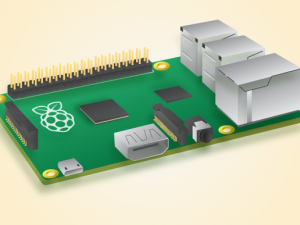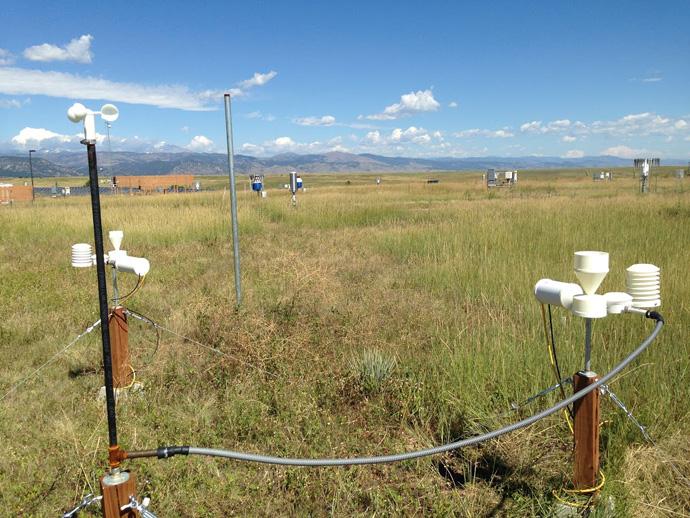USAID’s Office of US Foreign Disaster Assistance (USAID/OFDA) and the National Oceanic and Atmospheric Administration (NOAA) have partnered since 1997 to assist developing countries in predicting and preparing for extreme weather. One major need of such countries is to improve weather observation — but constructing, outfitting, and maintaining weather stations can be prohibitively expensive for poorer countries. When something breaks, hiring a technician and replacing a part can be costly.
What can be done under such circumstances when a critical instrument fails and lives are at stake? The answer can be found in lower-cost, higher-technology technology — and 3D printing will likely become an invaluable money- and life-saving solution for weather stations with tight budgets. The Micro-Manufacturing and Assembly project overseen by Kelly Sponberg, a program manager at the University Corporation for Atmospheric Research (UCAR) Joint Office of Science Support (JOSS), working in collaboration with NOAA, has begun developing afforable, 3D printed meteorological tools with which to equip weather stations.
Thanks to this collaborative research project, 3D printers can produce nearly all of the necessary parts to manufacture accurate, reliable weather stations, including in many flood-prone areas where formerly it was just too expensive. With floods the most deadly form of natural disaster, forewarning can save lives.
“In the U.S., weather is very accessible. You can turn on the news, look online, or use an app on your phone. It’s easy to take for granted the ability to check the weather,” said Sponberg. “But in many developing countries, weather forecasting has been limited because of the high cost of weather systems. I wanted to change that by finding an affordable way for countries to predict and prepare for weather.”
The project will be the subject of a presentation this week at the third United Nations World Conference on Disaster Risk Reduction. Thousands will be in attendance at the conference, held this year in Sendai, Japan, and will be briefed on how the 3D printing effort will benefit some of the poorest but most vulnerable countries. The overarching goal is, probably not surprisingly, to reduce as much as possible the catastrophic toll taken by weather-related disasters.
Another UCAR JOSS project manager and mechanical engineer, Martin Steinson, actually creates the 3D designs for the weather stations and virtually the only non-3D printable components are sensors. At the stations data related to pressure, humidity, rainfall, wind, and temperature are collected and stored in a Raspberry Pi, a small computer no larger than about 3” x 5”. The data is transmitted to experts who use it for their forecasts. Additional sensors can be added to the individual weather stations as the program continues.

The Raspberry Pi 2 Model B is the second generation Raspberry Pi. It replaced the original Raspberry Pi 1 Model B+ in February 2015.
At the moment, the 3D printed stations are going through a series of tests to ensure they meet international standards and can themselves stand up to challenging weather conditions. When the testing phase ends, pilot projects will be launched in a few sites. Zambia may be one of those countries tapped to benefit from a test run of the 3D printed weather stations. This coming summer, Zambia’s National Weather Service will receive laptops onto which the 3D designs for the various parts are loaded. They’ll also receive 3D printers and any other materials and tools required to create the weather stations. As budgets permit, additional stations can be produced.
This collaborative project provides real solutions to poorer nations who are often most at risk from extreme weather conditions. All those involved are confident that this cost-cutting, forward-thinking, 3D printing weather station project could save thousands or even millions of lives.
“The bottom line is that 3D printing will help to save lives,” said Sezin Tokar, a hydrometeorologist with USAID/OFDA. “Not only can they provide countries with the ability to more accurately monitor for weather-related disasters, the data they produce can also help reduce the economic impact of disasters.”
Tell us your thoughts about this life-saving application in the 3D Printed Weather Station forum thread over at 3DPB.com.
Subscribe to Our Email Newsletter
Stay up-to-date on all the latest news from the 3D printing industry and receive information and offers from third party vendors.
You May Also Like
US Army Corps of Engineers Taps Lincoln Electric & Eaton for Largest 3D Printed US Civil Works Part
The Soo Locks sit on the US-Canadian border, enabling maritime travel between Lake Superior and Lake Huron, from which ships can reach the rest of the Great Lakes. Crafts carrying...
Construction 3D Printing CEO Reflects on Being Female in Construction
Natalie Wadley, CEO of ChangeMaker3D, could hear the words of her daughter sitting next to her resounding in her head. “Mum, MUM, you’ve won!” Wadley had just won the prestigious...
Blue Laser-powered M600 3D Printer Launched by Meltio
Founded in 2019 as a joint venture between Additec and Sicnova, metal 3D printer OEM Meltio develops and manufactures high-performance and easy-to-use metal 3D printing solutions that use its patented wire-laser metal...
3D Printed Storage Tanks Cut Material Costs by 25%
In a previous article, “Concrete Dreams: Let’s Print Money, Not Houses,” we discussed how the spotlight on 3D printing homes might be misplaced. Bollards, pedestrian bridges, and concrete tanks could...































